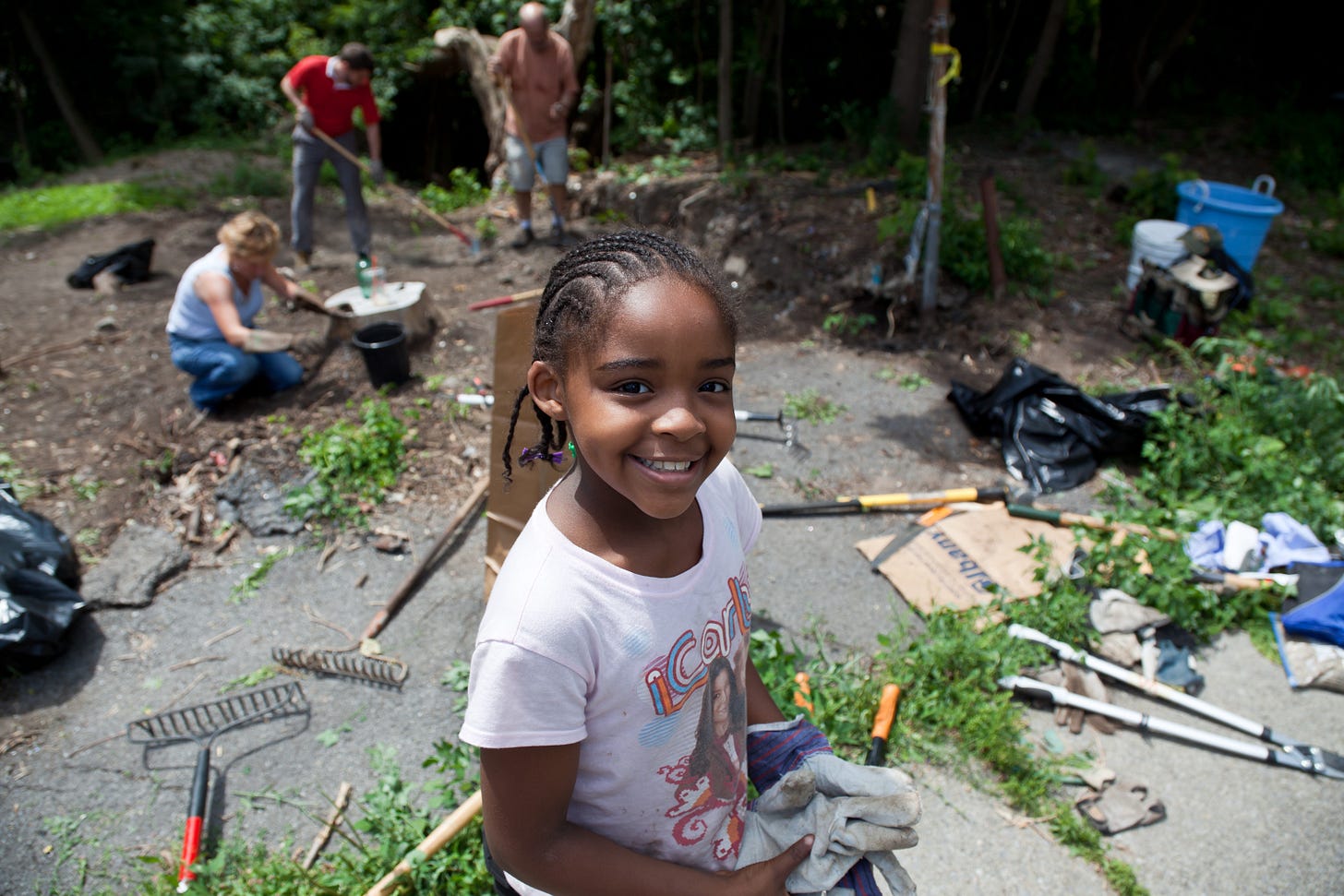Prefigurative Community Building (Part 32)
Growing Together: How to Start a Permaculture Guild as a Power With Project

When we talk about building a world that works for everyone, we often forget that nature has already been doing that. Permaculture, short for "permanent culture", isn't just about growing food in sustainable ways. It's a way of seeing the world that centers interdependence, care, and cycles of mutual benefit. In that sense, it's not just ecological design, but social and ethical design too.
Permaculture guilds take this idea further. They’re small, local groups that share knowledge, tools, and time to help each other grow food, restore ecosystems, and care for the land in ways that also care for people. But here’s the key: when formed as Power With structures, these guilds aren’t led by one charismatic founder or dependent on experts. They’re relational, reciprocal, and horizontal. That means avoiding Power Over patterns, like domination, extraction, or saviorism, and instead embracing distributed leadership and shared stewardship.
This essay will walk you through how to start a permaculture guild rooted in Power With principles. You'll find step-by-step guidance, links to useful resources, and examples of projects already doing this well.
Step-by-Step Guide to Building a Permaculture Guild as a Power With Project
Step 1: Gather the Right People (Not Just the “Right Skills”)
Instead of recruiting only the most knowledgeable gardeners or designers, invite people who care about land, food, and community. This can include elders with plant knowledge, kids who love to dig in the dirt, folks with disabilities who want accessible gardens, and neighbors with unused yards.
Hold an open meeting at a park, library, or someone’s backyard. Make it clear this isn’t a lecture, it’s a potluck of ideas.
Resources:
Step 2: Co-Create Shared Agreements
Before you plant anything, plant trust. Use consensus or sociocratic decision-making to establish how your guild will communicate, make decisions, handle conflict, and share resources.
Don’t gloss over access needs. Ask: What does everyone need to fully participate? This is especially important for disabled or chronically ill members.
Resources:
Step 3: Map Your Assets and Needs
Together, draw a map of your neighborhood or bioregion. Include where people live, what tools you have, where compostable waste is available, who has land access, and what crops are needed or wanted.
This isn’t just ecological. It’s social. Ask: Who’s hungry? Who’s isolated? Who’s got knowledge to share? Then design your guild to meet those needs in relational, not transactional, ways.
Resources:
Step 4: Start Small and Cycle Feedback
Choose one site, maybe a shared garden plot, a parkway, or someone’s front yard, and do a small pilot project. This could be a herb spiral, a native pollinator bed, or a rain garden.
Make sure the process includes everyone, not just those who can do heavy labor. Celebrate each small harvest. Then pause. Ask what worked, what didn’t, and how to adjust.
Resources:
Step 5: Share What You Learn (and Let Others Remix It)
Document your process with zines, videos, or simple photo essays. But don’t brand it or try to “scale up.” Instead, encourage others in nearby towns or neighborhoods to start their own guilds, using your process as compost, not blueprint.
Support replication, not centralization. Let each new guild shape itself around local needs.
Resources:
Power With in Practice: Two Examples
1. L.A. Eco-Village (Los Angeles, USA)
L.A. Eco-Village is an urban permaculture experiment built on cooperative housing, water reclamation, community gardens, and mutual aid. They operate with participatory governance and actively center accessibility, affordability, and anti-racism in their land practices.
2. Huerto Tlatelolco (Mexico City, Mexico)
Built on the site of a former political tragedy, Huerto Tlatelolco is a community permaculture space that grows medicinal and food plants using agroecological methods. They use consensus-based organizing, host free public workshops, and work directly with Indigenous-led groups.
https://www.facebook.com/HuertoTlatelolco
Conclusion: Growing Together, Not Upward
Permaculture guilds, when organized as Power With systems, help us remember something capitalism makes us forget: that care is not a service, it’s a way of being. That knowledge should not be hoarded. That land can be loved in common. And that coordination doesn’t require leaders, it requires deep, adaptive relationships.
We don’t need massive funding or NGO validation to do this. We just need to stop asking for permission, start listening to the soil and each other, and grow something small, together.
As these guilds multiply, not scaled up, but rhizomatically replicated, they can become a living infrastructure for the world we want. Not in theory. In compost. In collards. In community.



